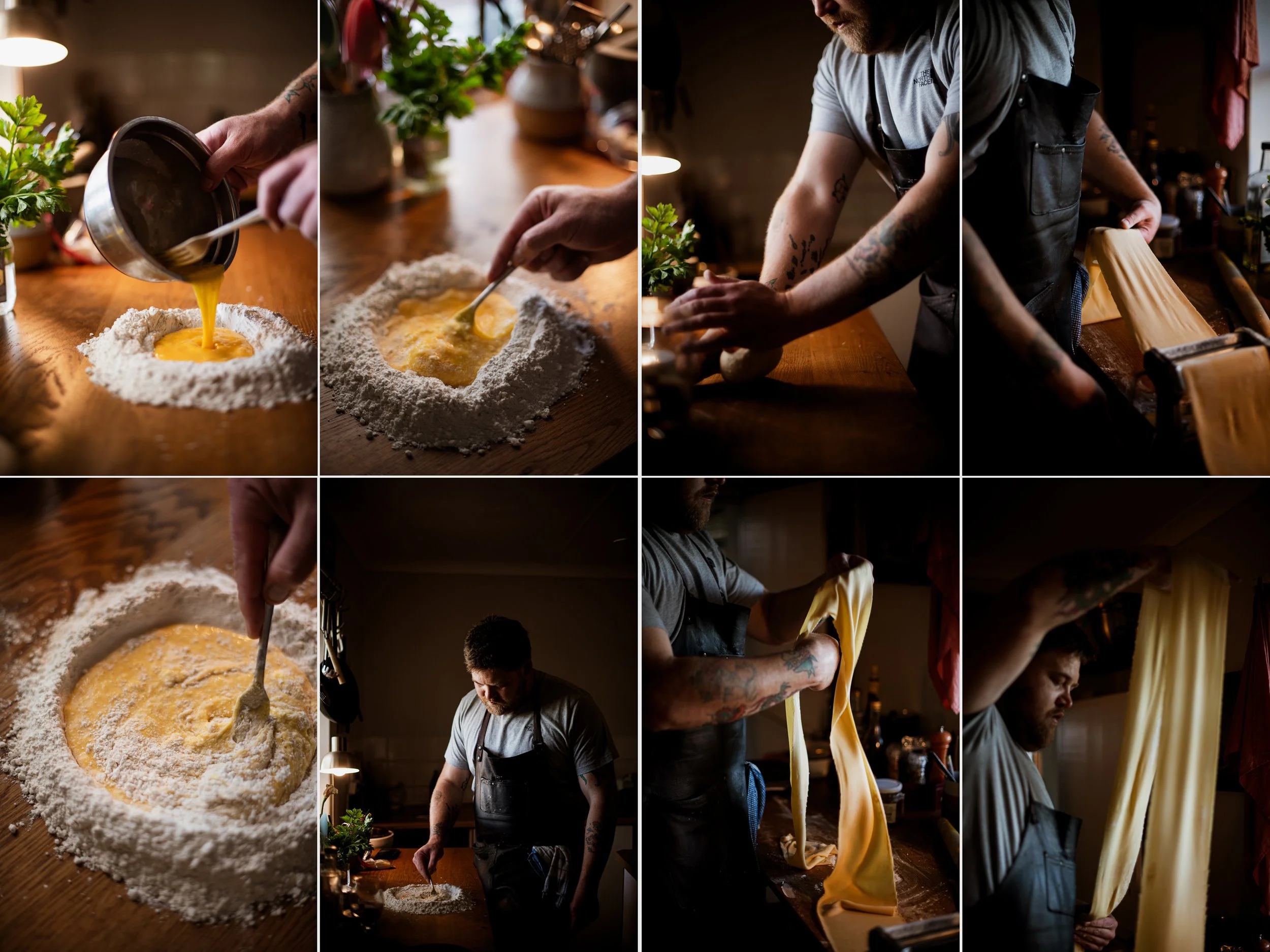Lasagne the right way
Lasagne is often one of those oversaturated recipes — something you can pick up ready-made at a convenience store or order from your favourite pasta restaurant. It’s often treated as a midweek meal that “does the job” but never truly wows you.
But what if I told you that with patience, attention, and a sheer desire for deliciousness, you could create a version that rises far above all the rest? This is my lasagne — deeply savoury, rich, and layered with love.
It’s slow-cooked, carefully assembled, and utterly rewarding. Once you make it this way, you’ll never want to go back.
This lasagne is a labour of love — and that’s the point. The slow-cooked ragù, the handmade pasta, and the carefully built layers all come together to make something far greater than the sum of its parts. It’s not just a meal — it’s a celebration of patience, craft, and flavour.
For the ragu:
750 g beef mince
150 g pancetta, diced
2 carrots, finely grated
1 large onion, finely grated
3 cloves garlic, finely grated
100 g mushrooms, finely chopped
2 tbsp tomato paste
Olive oil for cooking
1 cup quality red wine
½ cup dry Italian sweet wine
(e.g. Marsala or Vin Santo)
1 cup milk
1 tin peeled and chopped tomatoes
1 sprig fresh oregano
1 sprig fresh thyme
For the pasta:
400g “00” flour (bread flour will
work too)
4 large eggs
For the bechamel:
1 cup cream
1 cup milk
2 tbsp butter
2 tbsp flour
100g grated Parmesan cheese
1 egg yolk
In a heavy-based pot, heat olive oil over medium heat.
Add the pancetta and cook until the fat begins to render and it starts to crisp. Add the onion, carrot, and garlic and cook slowly until soft and sweet — you’re building the base of your flavour here. Add the beef mince and cook until deeply browned.
Take your time here — colour equals flavour.
Stir in the tomato paste and cook for 2–3 minutes to caramelise it slightly. Deglaze with the red wine and sweet wine. Cook this out completely — you don’t want any harsh alcohol flavour, only deep richness. Add the chopped tomatoes, milk, oregano, and thyme. Reduce the heat to low and let it gently bubble away for 2 - 4 hours, stirring occasionally.
The ragù should be thick, rich, and deeply savoury — never watery. This is the soul of your lasagna.
In a saucepan, melt the butter and stir in the flour to form a roux which is the base for the bechamel sauce.
Cook for 1–2 minutes. Slowly whisk in the milk and cream, stirring constantly until thickened and silky.
Stir in the Parmesan. Remove from the heat and whisk in the egg yolk for richness and sheen.
On a clean work surface, make a well in the centre of the flour and crack in the eggs for the pasta dough. Slowly bring the flour into the eggs until a dough forms. Knead for 8–10 minutes until smooth and elastic. Wrap and rest for 30 minutes.
Roll the pasta out by hand or machine into thin sheets — on a pasta machine, aim for setting 2.
Traditionally in Italy, the pasta is the vehicle — the sauce is simply there to flavour it. It’s essential that the sheets are thin and delicate so that the layers remain light, not heavy.
Preheat your oven to 180°C. Lightly oil a baking dish. Begin with a thin layer of béchamel at the bottom, then a layer of fresh pasta. Add a thin layer of ragù, then a
scattering of Parmesan, and a touch of salt and pepper.
Repeat this layering 8 times — thin, delicate layers are key to a refined lasagne. Finish with a final layer of béchamel and a generous grating of Parmesan.
Bake for 45 minutes at 180°C until golden, bubbling, and irresistible. Let it rest for 10–15 minutes before slicing — this allows the layers to settle and the flavours to deepen.




